Day 2 of our cruise – up early for an 8am breakfast – full hot buffet complete with scrambled eggs and bacon – pity the bacon was very salty … we’ve noticed that a lot of the food here has a lot of salt.
The weather had turned wet and miserable so we couldn’t really see much of the views, which was a shame.
After breakfast we had a briefing about our excursions – including instructions on what to wear and how to put on the life jackets – needed for the Zodiac ride from the boat to shore.
Our first excursion was to Ainsworth Bay – we met in the lounge at the scheduled time, complete with our life jackets on and our wet weather gear, swealtering in the heated room. Fortunately they took us out to the rear deck fairly promptly so we could wait outside where it was cooler. The Spanish speaking group went first, followed by the German and English speaking groups – so we were near the end. We had specific instructions for boarding one of the four zodiacs off the end of the boat – two would load at once with up to 12 people seated on the rubber sides – and then would speed off to shore before returning to collect more.
The first zodiac had taken some of the excursion crew and their mobile landing ramp – as each zodiac reached the shore, they simply lifted the ramp up onto the nose of it and we stepped off one by one and walked down the ramp to the beach.
After our experiences previously with rain getting onto the camera lens and spoiling the photos during the ice trekking at Glacier Perito Moreno – I had packed the trekking umbrella. We hadn’t been using the umbrella while out in the rain – mostly have just relied on our rain jackets, which usually do the job. It proved to be a good idea though – I was able to hold the light umbrella in one hand while taking photos with the other hand – effectively shielding the camera from the rain and permitting me to continue taking photos. A number of people commented to me later about how it was a good idea (but none of them seemed to have umbrellas – and it would not have worked had it been windy!).
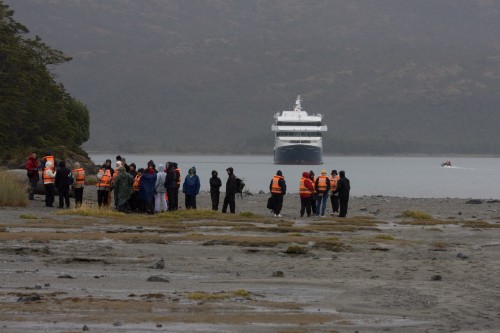
The first thing we were able to do was view an Elephant Seal which had come onto land the previous week and died – not a pretty sight, but the size of it was impressive. It hadn’t really started to decompose much yet – but it was still a bit smelly. We then heard the calls of other elephant seals, which were spotted on a small island not far away – we could see them rearing up and calling.
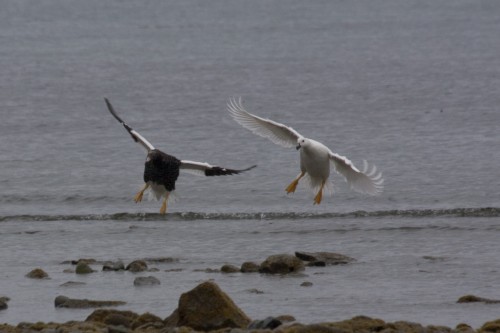
We then proceeded on a walk through the forest – with our guide explaining about the history of the area – pointing out various plants and natural features, and telling us about the original inhabitants of the region. It was still raining constantly, and the area was quite wet and boggy – very muddy too. I quickly regretted wearing my light coloured pants – they quickly became very dirty around the bottom of the legs, and got quite wet as we trudged through the mud – fortunately my shoes kept most of the water out, although I was a bit disappointed when I accidentally stepped in a couple of deeper puddles and felt the water seeping through from around the shoelace area (which is not actually waterproof). Leanne was quite impressed with her shoes – kept her feet very dry the whole time. Perhaps she also managed to avoid the deeper puddles that I seemed to find!
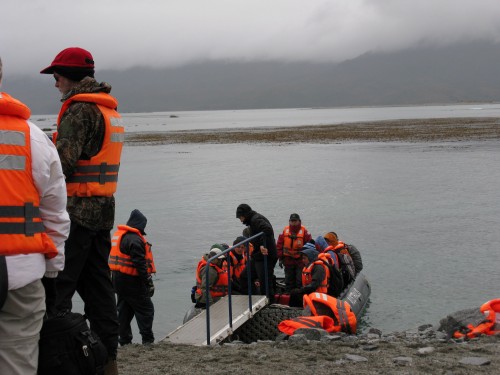
We came across a beaver dam – quite interesting to see how large it was and how it had affected the flow of the creeks – and developed its own small eco-system upstream. The guide explained the story about how two Argentinian men had imported Canadian Beavers in the hope to breed them for their pelts – but it never really took off and the beavers became established in the wild. The meat isn’t that good either – so no trade in trapping them developed – and with no natural predators (apparently the local carnivores didn’t like beaver meat either!), they thrived and have become quite a pest.
We made it back to the beach, and just as we were heading back to the zodiac boarding area, we came across a large female Elephant Seal on the beach, and were able to get good photos of her while she “galumphed” her way slowly into the water.
[table1][_thumb;$photoid;564;2008-02-22_-_40D_4946.jpg]Elephant Seal – Ainsworth Bay, Cruceros Australis[/thumb]
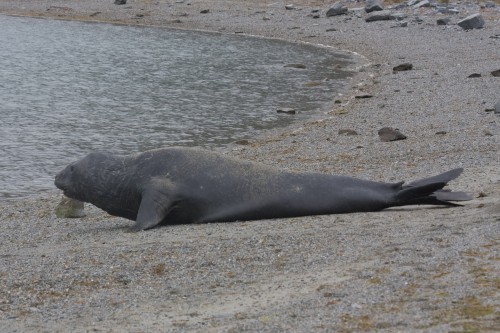
We eventually boarded the zodiacs and got back to the boat, totally soaked and dirty. Given the nice clean ship with plush carpets everywhere, we wondered how they were going to deal with all the mud we were bringing back. When we got off the zodiacs we quickly discovered their plan – they had a high pressure water jet which we were all forced to endure as they squirted our boots down – which ensured that our feet and legs got wet (although Leanne once again managed to keep her feet dry – her boots are very good!).
We made it back to our cabin, stripped down and laid our gear all out to dry … we had another excursion booked for the afternoon, so we had to manage our wet clothes as best we could. We worked out a system of “onboard” gear and “excursion” gear – which meant that for the rest of the trip we were changing constantly between the two sets. I managed to wash my pants and they dry very quickly, so I swapped them to being my onboard pants, and put my dark brown pants out as excursion wear. We had both worn long underwear – which works well for keeping the legs warm and dry even when our pants are wet from rain - that worked well.
We had a bit of a snooze and then headed downstairs for lunch – a buffet with several types of pasta and a variety of salads and other dishes we could choose from. Once again we found the food to be very salty – although it did improve a little by the end of the trip.
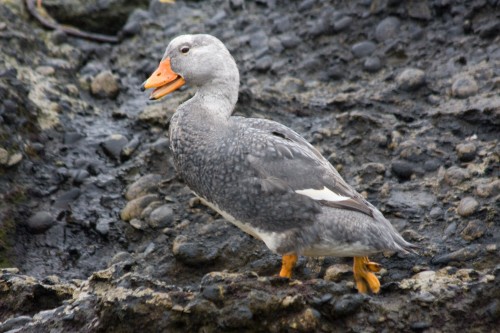
Our afternoon excursion was a zodiac boat ride around Tucker Island – first we saw a Magellanic Penguin rookery – although many of the penguins had already migrated, since there weren’t all that many there. Given how many we had seen at Magdalena Island earlier in the week, it wasn’t that exciting for us. As we continued around the island, we got a very good look at a Flightless Steamer Duck which had climbed out of the water, and then further around we came across a Cormorant rookery. There is nothing too unusual about seeing a lot of sea birds nest on a rocky cliff face – and I’d already seen a lot of Cormorants – especially Imperial Cormorants. Indeed, up until we saw tens of thousands of penguins at Magdalena Island, I think the Imperial Cormorant was the bird we had see by far the most of. However, I was very surprised when we began seeing other types of Cormorants nesting here too – there were Magellanic Cormorants as well and I think there were other types too – although I didn’t get any good photos to help identify them. We had some great views of them, and I took a lot of photos – although I was disappointed in the end with how few turned out – the combination of the rocking boat, the low light and the zoom lens proved to conspire against me being able to take many good shots.
[table1]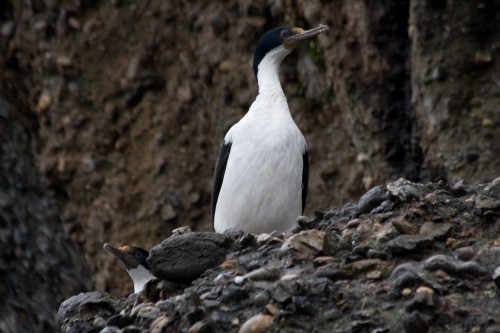
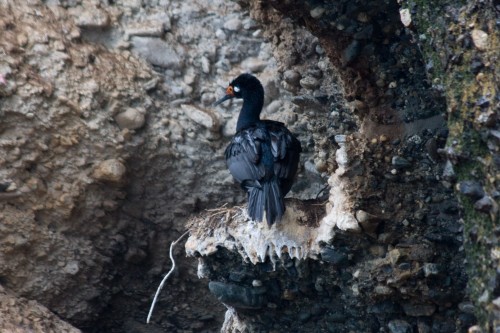
[table1]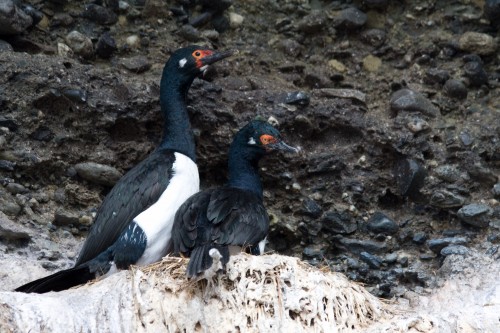
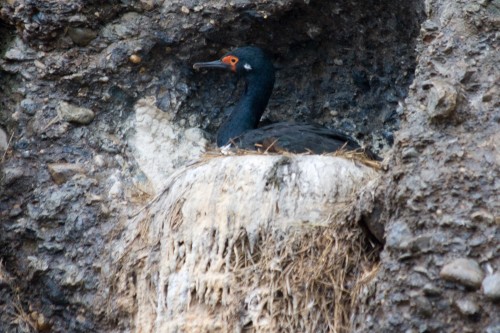
We eventually made it back to the boat, and got out of our wet gear again – fortunately no mud this time!
Spent some time in the lounge before dinner – Leanne read her book while I spent some time organising our photos and such – mostly deleting duplicates! I had some fellow passengers come up and ask me about whether I had photos of some of the birds we had seen – they wanted help identifying them … more birders! They were able to help me identify some of birds I had seen too, so it was a useful exercise.
Dinner was another four course meal, and we headed to bed soon afterwards.
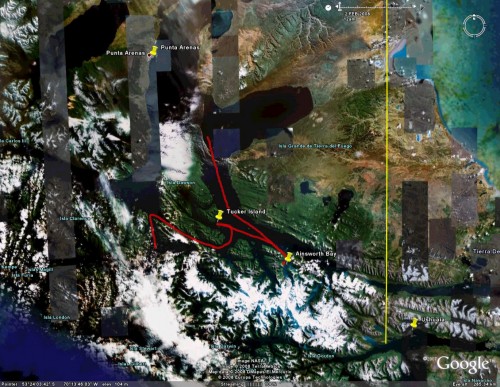
Leave a Reply